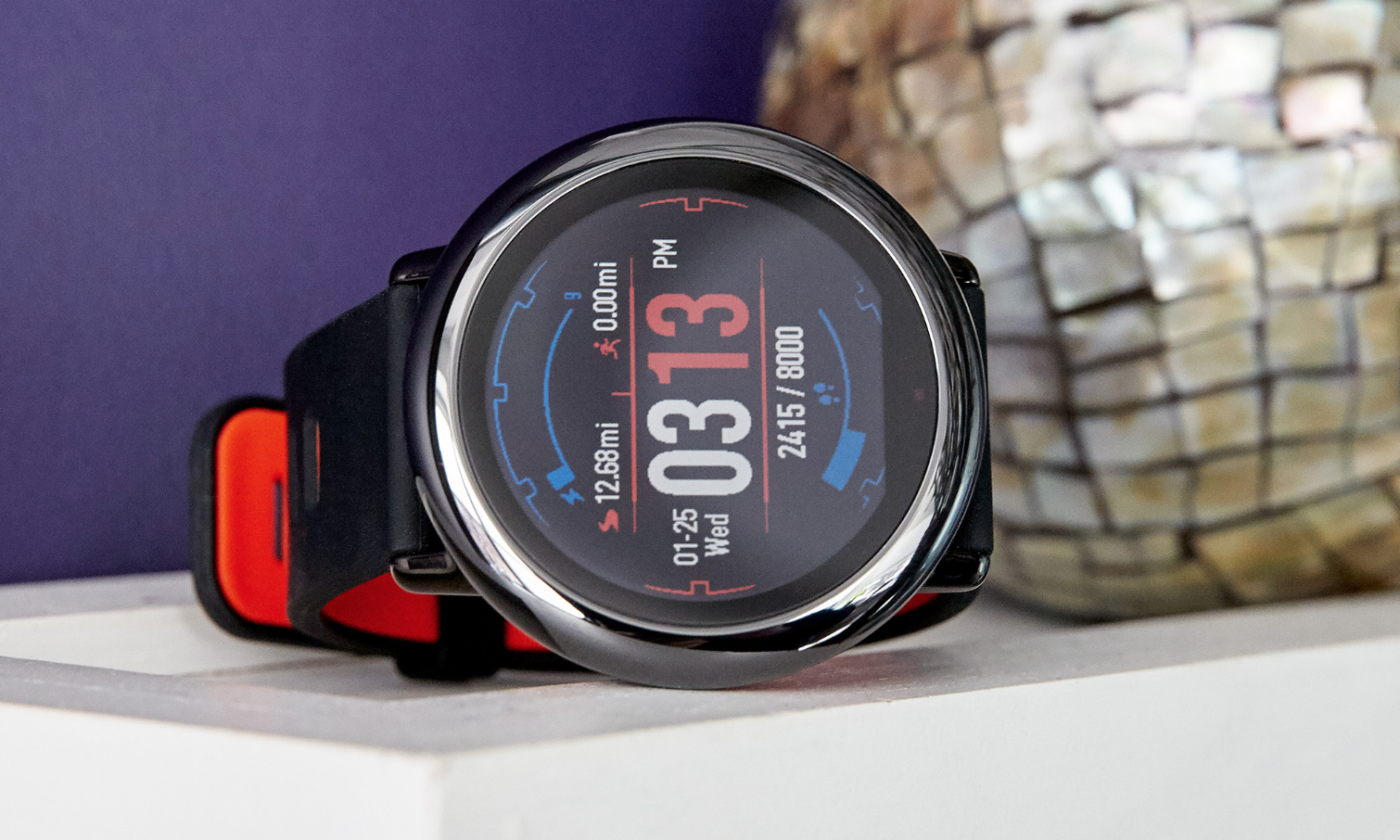Tom's Guide Verdict
The Amazfit Pace is an inexpensive GPS watch with a lot of features, but the finer points need some work.
Pros
- +
Inexpensive considering its features
- +
Built-in music player
- +
“Breadcrumb” feature is helpful in unfamiliar locations
- +
Tracks heart rate, GPS
Cons
- -
Tracks only a few activities
- -
Can’t customize workout screens
- -
Syncs only with Strava
- -
Tiny button
Why you can trust Tom's Guide
It’s not easy to break into the running-watch market when established competitors such as Garmin, TomTom and Fitbit dominate the space. Yet that’s what Amazfit is attempting to do with the Pace, a $159 GPS watch that offers a surprising number of features — such as a heart-rate monitor, a built-in music player and a customizable watch face — at a competitive price. It’s a strong first effort, but more work is needed for the Pace to keep up with the leaders.
- Read our Amazfit GTS review
Design
The Pace has a simple, rounded watch face that has a much cleaner look than most running watches. The top bezel is made of dark ceramic, which is polished to a sleek shine; the lugs get similar treatment.
Still, I’d prefer a less minimalist approach; the only physical button on the Pace is on its right side, and it’s hidden by the curvature of the watch. Though inconspicuous, the button is hard to press, especially when you’re out for a run. Plus, its only function is to turn on the backlight and unlock the display; all navigation is done by swiping the screen, which isn’t the most efficient method, especially when you’re running.

The Pace’s 1.34-inch, 320 x 300-pixel display isn’t as bright as the AMOLED screen on the Samsung Gear S3, but it was plenty bright, and it’s always on. It’s aided by its transflective layer, which uses sunlight to boost the readability of the screen. There’s also a backlight that can be turned on, either by pressing the Pace’s button or by turning the watch to your face.
MORE: Best Smartwatches - Top Picks for Android and iOS
Interface: Intuitive, But Swiping Required
With 16 watch faces to choose from, the Pace doesn’t offer nearly the amount of customization you get from bona fide smartwatches or Garmin’s Connect IQ-enabled GPS watches (such as the Forerunner 235), but it’s a nice start. I personally liked the “Marathon Life” face, which shows not just the time and date, but also battery life, daily steps taken and miles run during the week.
Amazfit’s Pace runs a very basic form of Android (not Android Wear) and is fairly easy to navigate through a series of swipes. Included are screens for your heart rate, daily steps, notifications, the weekly forecast, a stopwatch and more. When you swipe down from the top of the main screen, it also shows you a look at the day’s weather, battery life, silent mode and additional settings.
Get instant access to breaking news, the hottest reviews, great deals and helpful tips.

During an activity, the main screen displays your distance, heart rate, calories burned and time elapsed. That doesn’t seem like a lot of information for one screen, but it took me a little while to get used to the view. I wish there were a way to customize the main display, especially because, in order to reach secondary screens, you have to unlock the watch by pressing the side button, and then swipe up or down.
One screen I did like was a map showing a path of where I had run; like the bread crumb feature in the TomTom Spark, it’s handy if you’re running in an unfamiliar location and want to know how to get back to where you started.
Working Out: Needs Work
Currently, the Amazfit can track only four activities: run, walk, run indoor and trail run. While those constitute some of the most popular workouts, the selection is still a far cry from those offered by the competition, such as swimming, biking and cross-training.
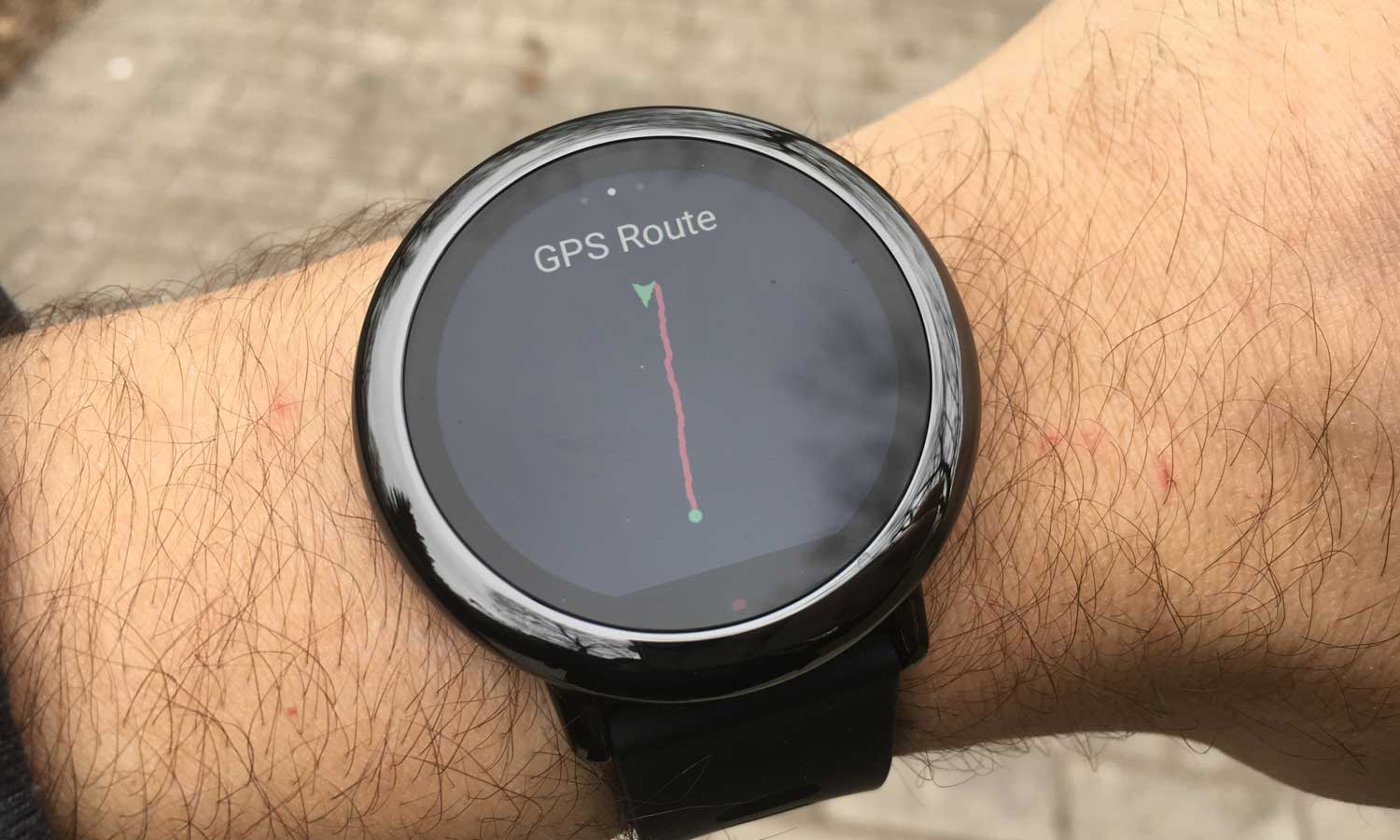
On my first outing with the Pace, its GPS took about a minute to acquire a signal, but on subsequent runs, it took just a few seconds. On all of my runs, though, it accurately recorded my location. I also liked that the watch buzzed at every mile, and gave a summary of my last split.
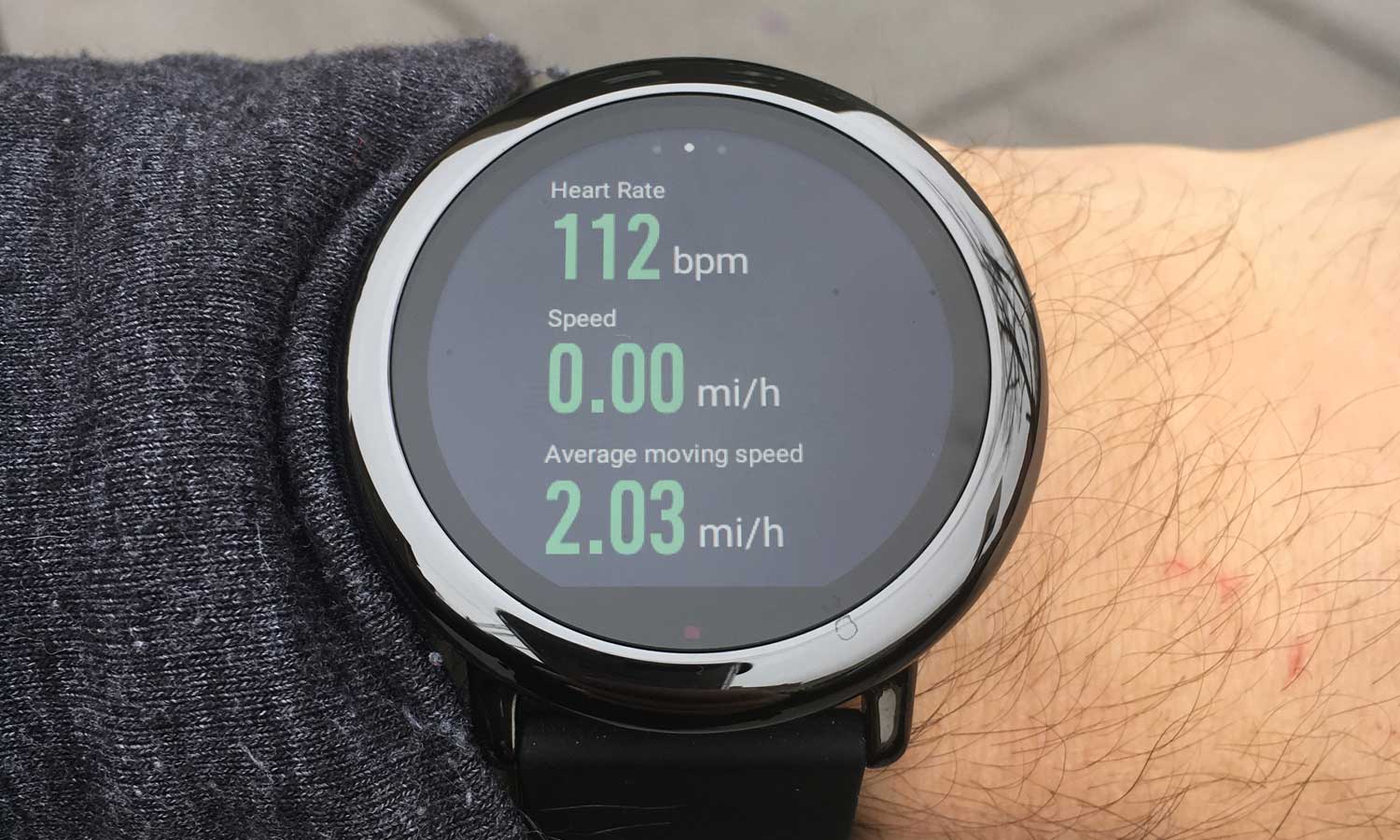
Its heart-rate monitor was a bit more erratic, however, as my beats per minute jumped up and down over the course of my runs. I did like when the watch alerted me when my heart rate exceeded 180 beats per minute.
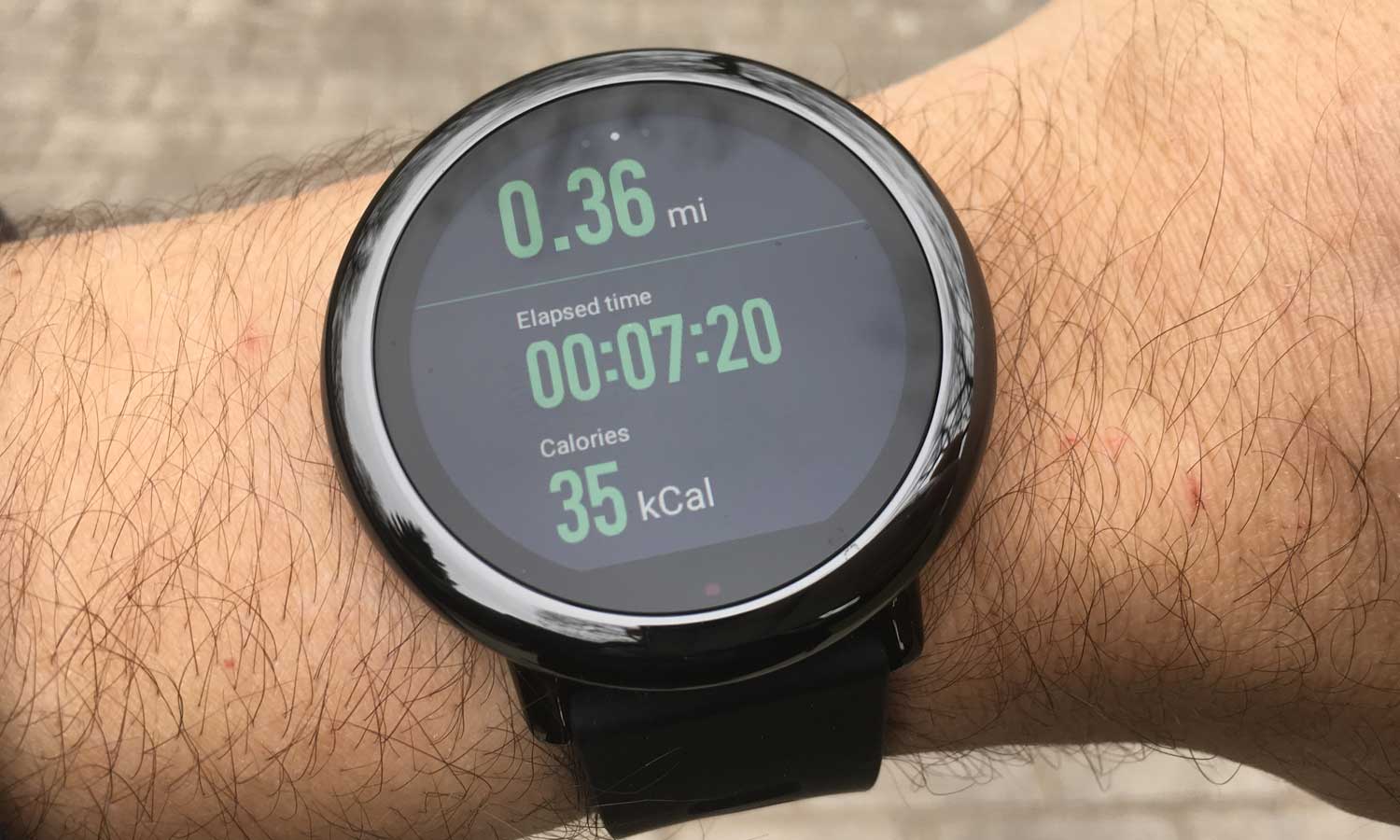
You can set target time, distance, pace and lap alerts, but other running-centric features, such as interval training and stride length, are missing. To pause or stop a run, you have to press the Pace’s tiny button and then swipe right. I tend to prefer physical buttons, as sweat on my fingers can easily make a touch screen hard to use.
Note that with the Pace, Strava is the only app you can sync data with; although that’s a popular app, I would like to see more options, such as MapMyRun. Viewing your activities on your smartphone is a two-step process: First, you have to sync the watch with the Amazfit app, and then you open the Strava app to see your data.
Other fitness features include a sleep tracker, as well as a move alert that encourages you to stand up if you’ve been sitting too long.
MORE: Best Fitness Trackers for Running, Swimming and Training
Music On Board
A great feature of the Pace is that it has 4GB of onboard storage and a built-in music player, so you can listen to music and not have to carry your phone with you. It’s another one of my favorite aspects of the TomTom Spark 3, and I’m glad to see it here, too. It was easy to change tracks and the volume from the watch — that is, once I pressed the tiny button to unlock the screen.
Adding music to the Pace requires you to connect it to your computer, using the included USB charging cable; Mac owners will also need to install the free Android File Transfer app on their computer.
Limited Smartwatch Features
Similar to a function on Garmin’s Connect IQ-enabled watches (such as the Forerunner 235), the Pace can show alerts from your smartphone, such as texts and notifications. It also has a caller-ID feature, and allows you to answer or reject calls from your wrist.
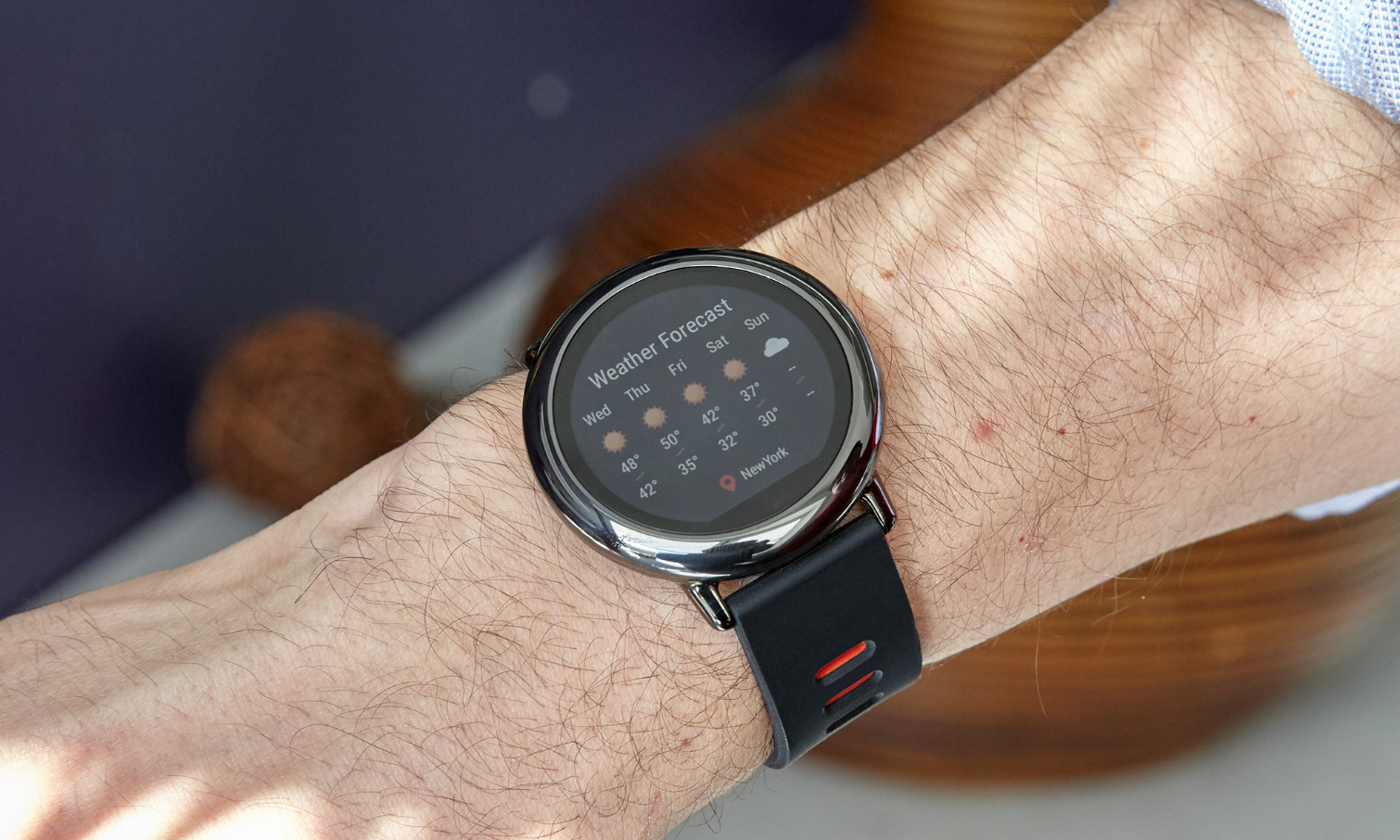
Lastly, the Pace will also show the local weather forecast, though it’s not smart enough to know when you’ve switched locations; you have to go into the Amazfit app and manually update the city.
Battery Life
When it comes to battery-life claims, Amazfit is using some alternative facts. The company says the Pace should last up to 35 hours with continuous heart-rate and GPS tracking. That would put its battery life on a par with those of much more expensive models, such as the $599 Garmin Fenix 3.
In practice, I found that after a 37-minute run using GPS and the heart-rate monitor, I had drained the Pace’s battery from 100 percent to 84 percent.
If you’re not using it for an ultramarathon, the Pace should last for five days of regular use and 11 days with basic use. (The latter means using it only as a watch and step counter, with notifications, GPS and the heart rate monitor turned off.
MORE: GPS Watch Buying Guide
Bottom Line
Amazfit is off to a good start with the Pace. It’s an attractive and relatively inexpensive GPS watch that has a bright and colorful screen, a heart-rate monitor and a built-in music player. I also liked some of its smartwatch-like features, such as notifications and a customizable face. You won’t find this combination of features for a price this low in any other device.
Yet there are a lot of little annoyances that add up. For example, the Pace’s small button, which you have to press to get anything done, is difficult to use while running. It’s also cumbersome to have to swipe and tap the screen to start and stop runs. Amazfit’s app is rudimentary, and it’s a pain that you have to sync it with Strava — and only Strava — to see your fitness data.
For about the same price, the TomTom Spark 3 Cardio + Music gets you many of the same features as the Pace (including the music player), but that device lacks a color screen and smartwatch notifications. More importantly, though, the Spark 3 gets all the little things right.
The Amazfit Pace still holds promise, though, and I’ll be interested to see how it develops.

Michael A. Prospero is the U.S. Editor-in-Chief for Tom’s Guide. He oversees all evergreen content and oversees the Homes, Smart Home, and Fitness/Wearables categories for the site. In his spare time, he also tests out the latest drones, electric scooters, and smart home gadgets, such as video doorbells. Before his tenure at Tom's Guide, he was the Reviews Editor for Laptop Magazine, a reporter at Fast Company, the Times of Trenton, and, many eons back, an intern at George magazine. He received his undergraduate degree from Boston College, where he worked on the campus newspaper The Heights, and then attended the Columbia University school of Journalism. When he’s not testing out the latest running watch, electric scooter, or skiing or training for a marathon, he’s probably using the latest sous vide machine, smoker, or pizza oven, to the delight — or chagrin — of his family.
-
ZeApelido Wow you used that much batter in 37 minutes? I did a Run Mode run for 3 hours and drained 10% of my battery. Perhaps you had poor GPS signal?Reply
